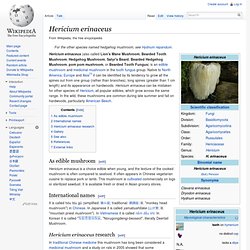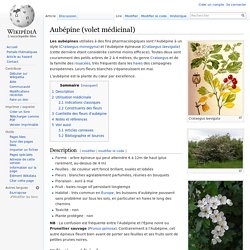

Ph.D in literature and drama (University of Wisconsin) D.O. M (Doctor of Oriental Medicine), IICM, Santa Fe, New Master's Degree in Chinese Medicine Certified macrobiotic Teacher, Kushi Institute Publications: Le théâtre de Marguerite Duras (Stanford French Review) Articles and short stories in the Los Angeles Times, Japan Times, Science et Nature, Géo, PMLA, Macrobiotics Today, Wingspan (All Nippon Airlines International Flight Magazine), Hemispheres (United Airline Magazine) Presently teaching at Daoist Traditions, School of Chinese Medicine in Asheville; Visiting faculty every year at Les temps du Corps, Paris Seminars on Chinese Medicine, health and nutrition; specializing in Food Therapy and macrobiotic philosophy, blending the two into a dynamic modern model!
Weekend à Paris. Where are you Edward Snowden? Improving effects of the mushroom Yamabushitak... [Phytother Res. 2009. Hericium erinaceus. Hericium erinaceus (also called Lion's Mane Mushroom, Bearded Tooth Mushroom, Hedgehog Mushroom, Satyr's Beard, Bearded Hedgehog Mushroom, pom pom mushroom, or Bearded Tooth Fungus) is an edible mushroom and medicinal mushroom in the tooth fungus group.

Native to North America, Europe and Asia[1] it can be identified by its tendency to grow all the spines out from one group (rather than branches), long spines (greater than 1 cm length) and its appearance on hardwoods. Hericium erinaceus can be mistaken for other species of Hericium, all popular edibles, which grow across the same range. In the wild, these mushrooms are common during late summer and fall on hardwoods, particularly American Beech. As edible mushroom[edit] Herbes de Chine : Hericium Erinaleus (hou dou cu) - 猴頭菇. Aubépine (volet médicinal) Un article de Wikipédia, l'encyclopédie libre.

Les aubépines utilisées à des fins pharmacologiques sont l'Aubépine à un style (Crataegus monogyna) et l'Aubépine épineuse (Crataegus laevigata) (cette dernière étant considérée comme moins efficace). Toutes deux sont couramment des petits arbres de 2 à 4 mètres, du genre Crataegus et de la famille des rosacées, très fréquents dans les haies des campagnes européennes. Leurs fleurs blanches s'épanouissent en mai.